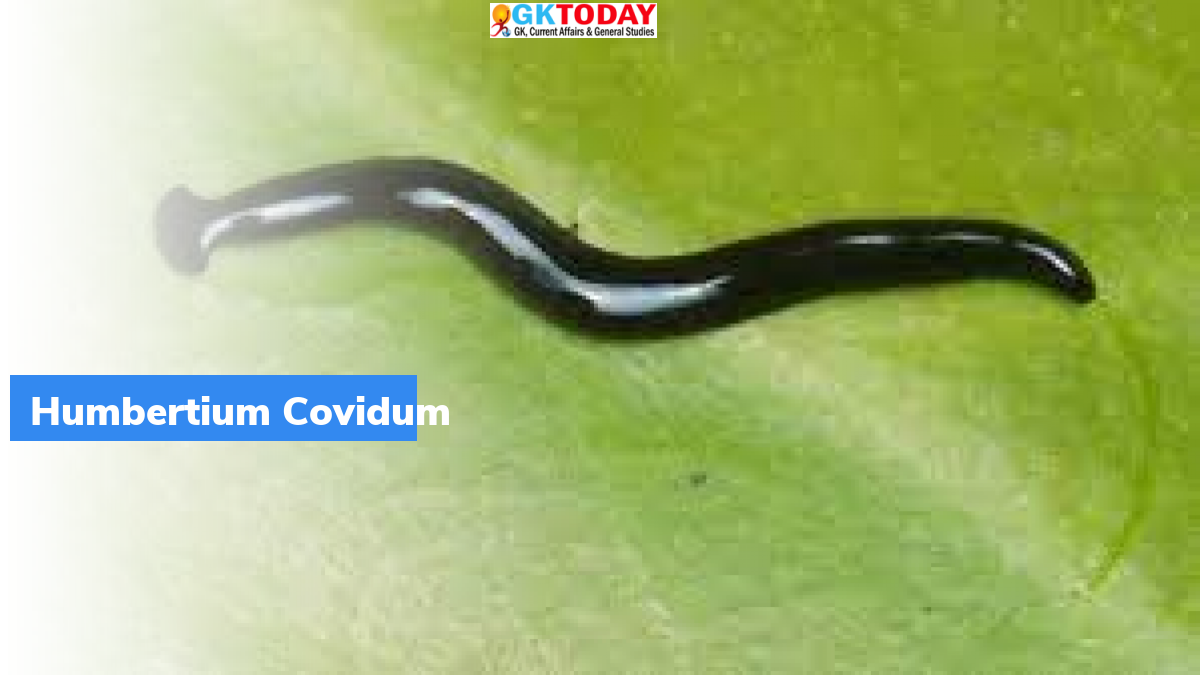Humbertium covidum: New hammerhead flatworm species
Scientists recently discovered Humbertium covidum. These are new flat worn species. They look like a mini cobra. The new species were found hunting snails in Italy and France. They have been named after COVID pandemic.
About H.covidum
H.covidum are not endemic in Italy and France. They are believed to be introduced by humans in these regions. They are hammer head flatworms. The hammer head worms are known for the distinctive size of their head. They usually prey on earth worms. The H.covidum hammer head flatworm feeds on snails. They are capable of tracking their prey. Some other flatworm species also feed on mollusks.
Habitat
These flat worms are generally found in warm parts of the world. They are common in Asia, mainly in Russia, China and Japan. They are transported by people by soil and also by plant trade. This makes them an invasive species. Invasive species means the species becomes over populated in a region and harms the environment. They are non – native species.
Physical features
They reproduce asexually. That is, they give birth without a mate. They have both types of reproductive organs. The H.covidum measures 3 cm long. They grow up to 40 cms. They are invertebrates. Meaning, they do not have backbone. Also, they do not have respiratory organs and circulatory system. Oxygen enters into their bodies through diffusion. These worms ingest and egest through the same opening. The digestive cavity is used to in take the nutrients and the undigested food are sent out through the same cavity.
Diseases
Some of the flat worms cause diseases in humans and animals. Cestodes is caused by tapeworms. They also induce huge losses in fish farms. They are seen as main threats to organic farming.
Benefits
They can be used to control the population of snails. Hawaii had used flatworms to control the exploding population of African snails.
Month: Current Affairs - February, 2022
Category: Environment Current Affairs • Science & Technology Current Affairs


